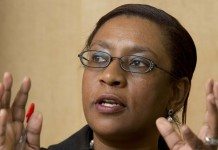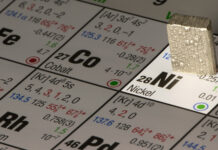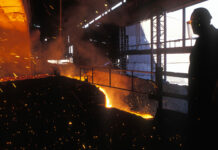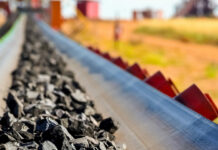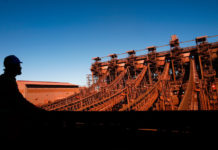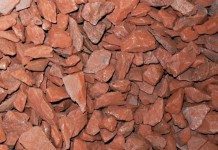
[miningmx.com] – CLIFFORD Elphick is hoping to capitalise on the
avalanche of money that China is pumping into Africa. While Western companies such
as BHP Billiton, Rio Tinto and Vale back off the continent, China has visibly upped the
ante this year.
In the past month alone, investments of all sizes have been flowing from Chinese
companies such as Hanlong Africa Mining’s $1.4bn bid for Sundance Resources which
has iron ore in Cameroon and the Republic of Congo (RoC). Cathay Fortune and its
partner, the China-Africa Development Fund, have bid $856m for Discovery Metals,
which has copper and silver in Botswana.
Closer to home, Beijing Haohua Energy has offered by buy $100m in shares of Coal of
Africa; Zhongrun is offering $84.7m for Noble Mineral Resources which has the Bibiani
gold project in Ghana, while earlier this year, Chinese company MinMetals bought
base metals miner Anvil Mining for $1.3bn.
Perhaps more known for his Gem Diamonds, and before that as the personal assistant
for the late Anglo American and De Beers supremo Harry Oppenheimer, Elphick has a
stake in an AIM-listed iron ore exploration play called Zanaga Iron Ore Company
(ZIOC).
ZIOC’s project is in the RoC – the Francophone Congo not the Democratic Republic of
Congo. The RoC has attracted some attention lately. It’s in the RoC, for instance, that
the JSE’s Exxaro Resources spent $349m buying African Iron’s Mayoko project.
Australian company Equatorial Resources is also active there. So from years of
obscurity, RoC suddenly takes centre stage, a development that doesn’t seem to have
tempted its government into a rash of revenue-hungry mine code changes. Yet.
The problem with the RoC is that like much of West Africa’s iron ore, it lacks
infrastructure.
The nearest port to ZIOC’s project is 380km away, requiring building either a railway
or a pipeline where the iron ore can be pumped in a slurry. Either option implies a
pricey infrastructure build and is therefore risky, notwithstanding the admirable
optimism of ZIOC’s corporate development executive, Andrew Trahar.
Trahar is ZIOC’s second Anglo link as he is the son of Tony, the former Anglo CEO who
took the mining group to London in 1999. “There are no obvious red flags on this
project,’ says Trahar when asked to name the key risks. That may be true, but ZIOC’s
project is not enough to tempt 50% plus one share shareholder, Xstrata, from
exercising its buy-out right over ZIOC’s shares.
ZIOC could attempt to raise its own capital for the project, but seeing as it could cost
between $6bn to $7.5bn, the option of attracting an Asian equity investor seems the
next most obvious financing route. “I don’t want big hype about the equity investor,’
says Trahar. “But we’ve had some positive responses.’ At stake is developing West
Africa’s largest single iron ore deposit, some 2.5 billion tonnes of reserves and enough
to support a 30 million tonne/year mine for 30 years.
Things do go wrong in mining, especially when you’re out fishing in emerging
markets, increasingly the norm. In fact, the new normal is getting a project through
the legal, environmental and other regulatory red tape without too much slippage on
time or budget. And the mine plan is never the mine.
It’ll take deep pockets. “I could run off a massive list of risks but we’ve front-end
managed this project. I think we understand the risks,’ says Trahar.
John Welborn, MD and CEO of Equatorial Resources, says that his company is making
progress in accessing sufficient infrastructure for its Moyoko-Moussondji iron ore
project. “We moved from concepts to an idea of what we want to do,’ he said in an
interview. There’s also support from the new RoC transport minister regarding
Equatorial Resources’ plans.
Unlike ZIOC, Equatorial Resources and Exxaro Resources favour a slower, build-up
approach, but final details on capital expenditure required and how Mayoko-
Moussandji will be ramped up won’t be published until after a resource statement is
published, around February. Australian stockbroker Bell Potter said earlier this year
that Equatorial Resources could spend $500m on a railway and port development
($150m for rail, $300m for the port, the balance would be working capital).
Sharing the expenditure would make greater sense, however. Welborn says that
there’s still an understanding that his company could share the cost with Exxaro
Resources, which is building the nearby Mayoko project, but there doesn’t seem to
have been too much progress so far.
Equatorial Resources doesn’t have the resource confidence of a ZIOC yet, but at least
it doesn’t have to seek out equity. It sold its one fifth stake in African Iron, the owner
of the Mayoko project, to Exxaro to cement the South African’s position in the RoC,
earning R548m (A$65m) at the time and taking cash resources to A$84m. “We don’t
need to go to the market just yet,’ says Welborn.






